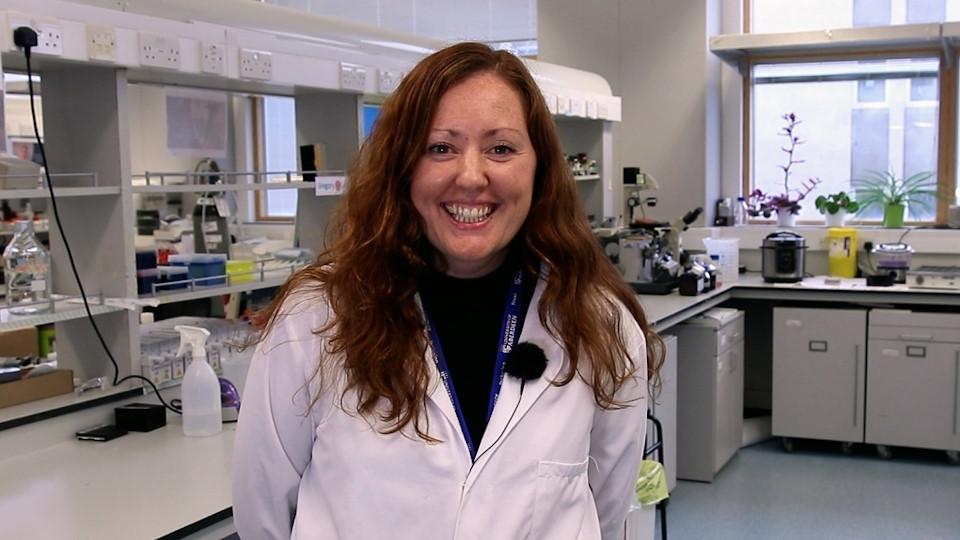Test could give early warning of motor neuron disease

Dr Jenna Gregory of the University of Aberdeen
Scientists have developed a new test for a biomarker in brain tissue that could detect people who will go on to develop motor neuron disease (MND) before they show symptoms.
The team, led by Dr Jenna Gregory of the University of Aberdeen in Scotland, think that the test – which looks for specific protein clumps in brain tissue samples – could allow patients to receive treatment for MND at an earlier stage, when it may be more effective. It may also serve as a surrogate marker to test new therapies more quickly.
That is increasingly important as new therapies have started to emerge for MND, which is also known as amyotrophic lateral sclerosis (ALS). For example, Biogen recently got approval in the US and Europe for Qalsody (tofersen) for a genetic subtype of the incurable disease associated with a mutation in the SOD1 gene.
The wide variation in symptoms that patients with the disease exhibit can make diagnosis based on clinical presentation challenging, so there is a pressing need for a diagnostic that can identify changes associated with the underlying disease process.
The researchers are using a molecule known as an aptamer – short nucleic acid sequences that can bind to a target like a protein or a peptide – to look for a protein called TDP-43 that aggregates to form cell inclusions in both inherited and sporadic forms of MND. The clumps are thought to impair the function of neurons in the brain and spinal cord.
Aptamers are already being used in cancer and Alzheimer’s diagnostics, and Gregory et al have adapted the technology to create an RNA-based probe for use in MND.
In time, the hope is that the aptamer could potentially be used not only to look for the biomarker in tissue samples, but also in spinal fluid and blood, or detected in brain scans.
Antibodies targeting TDP-43 have also been developed, but these are more cumbersome to produce and don’t seem to correlate as well with the development of MND symptoms. The new test has shown that clumps of the protein are forming well before people show symptoms.
“This tool ‘targets’ the disease protein and allows us to see where toxic clumps are building up in the body,” said Gregory. “It can do this for much lower amounts of disease proteins, and with greater accuracy than ever before,” she added. “This could be a game-changer for MND research, diagnostics, and treatment.”
The research has been funded by the Target ALS charity, and a paper on it has been published in the journal Acta Neuropathologica.
There are around 5,000 people living with MND in the UK, and the disease has drawn particular attention in Scotland in recent years following the diagnosis of rugby union legend Doddie Weir in 2016, who set up the My Name’5 Doddie Foundation. At the time of his death in 2022, the charity had raised more than £8 million for MND research.
“Due to advancements in research, many potential treatments are currently being explored in the lab and in clinical trials,” said Jessica Lee, director of research at the foundation.
“However, we now need robust biomarkers of disease to support the evaluation of these treatments and to speed up diagnosis, so that treatments can be started earlier in disease progression,” she added. “This exciting new technology holds promise to do just that.”












